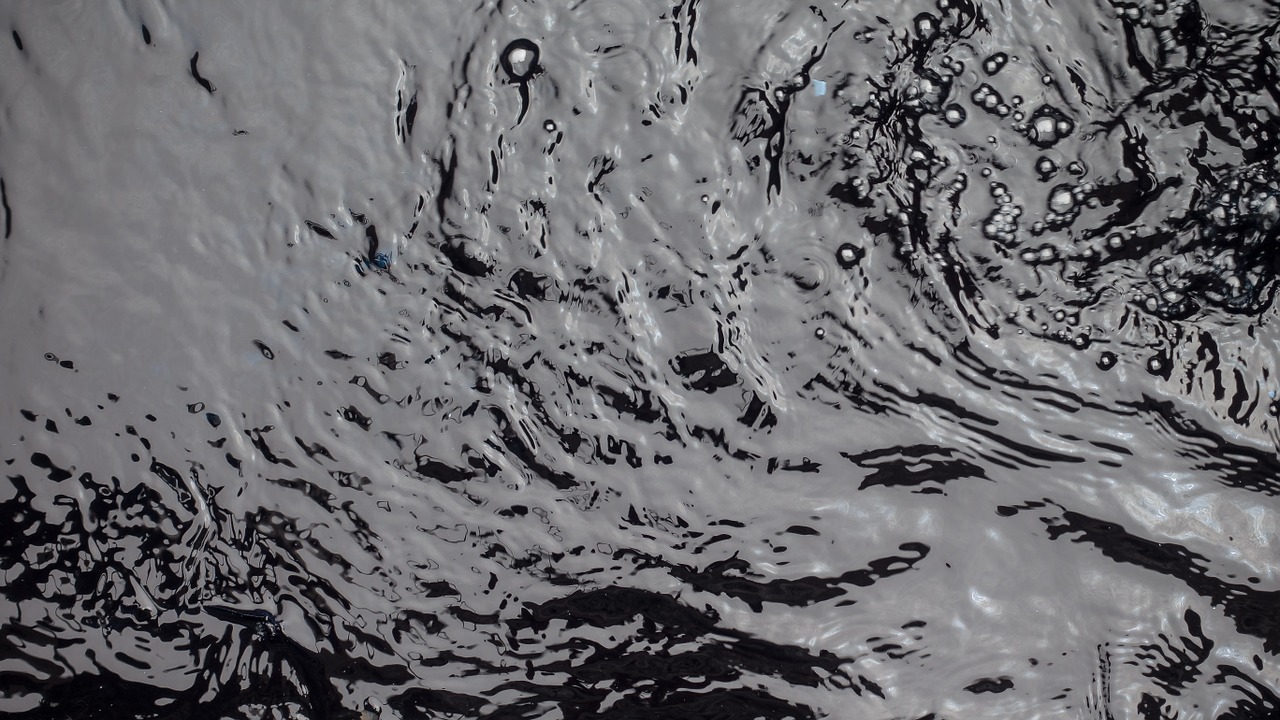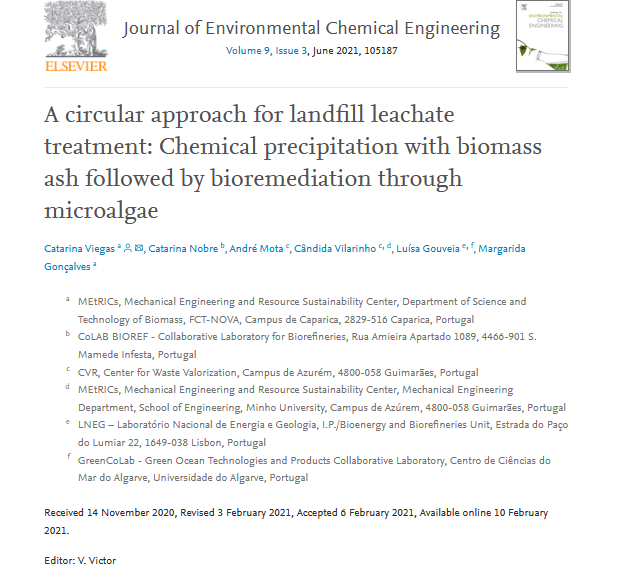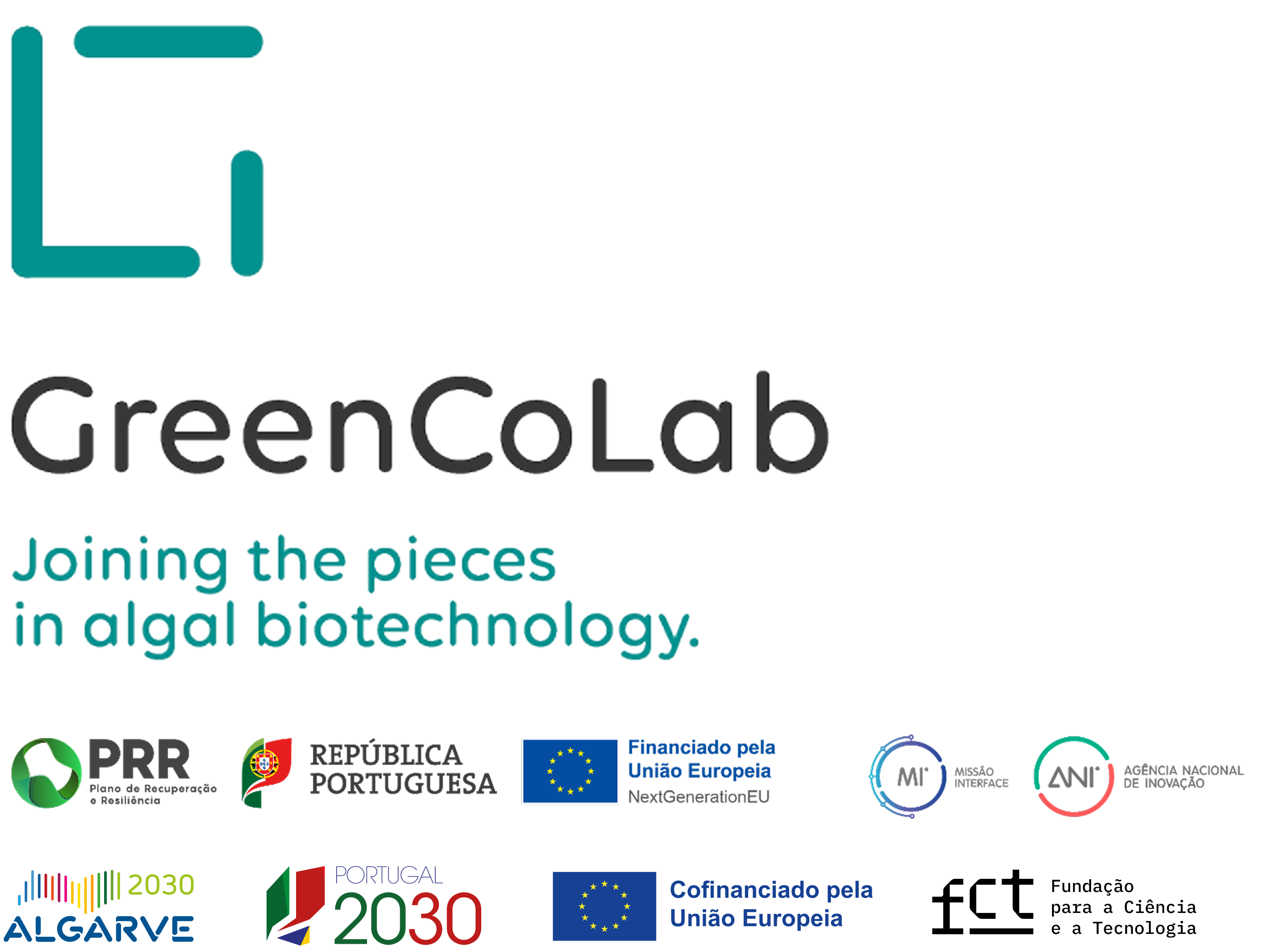

TITLE
A circular approach for landfill leachate treatment: Chemical precipitation with biomass ash followed by bioremediation through microalgae
JOURNAL
Journal of Environmental Chemical Engineering
AUTHORS
Catarina Viegas, Catarina Nobre, André Mota, Cândida Vilarinho, Luísa Gouveia, Margarida Gonçalves
ABSTRACT
The aim of this work was to study an integrated approach for landfill leachate remediation comprising chemical precipitation with biomass bottom ash as a pre-treatment to reduce color and turbidity followed by bioremediation through microalgae treatment for effluent disposal. Optimal pre-treatment conditions were determined through batch experiments and were found to be 160 g L−1 ash dose, 96 h of contact time, overhead agitation at 15 rpm and ash particle size below 500 µm. These conditions led to removal efficiencies of 74.3% for chemical oxygen demand and 98.5% for color. Large quantities of sludge containing excess biomass ash and precipitated compounds were formed during the pre-treatment. To minimize solid disposal, this sludge was tested as a raw material for cementitious and aggregate substitute in mortar formulations. Following the pre-treatment, the leachate was inoculated with six different microalgae species to evaluate their ability to grow in such a recalcitrant effluent and remediate it. After a period of 27 days biomass concentration from 0.4 to 1.2 g L−1 were achieved for the tested microalgae. Removal efficiencies were in the range of 18–62% for COD, 63–71% for N, and 15–100% for P. At the end of the treatment, algal biomass was characterized regarding protein, lipid, fatty acids, carbohydrate, and ash contents. This approach allows a low-cost remediation of these recalcitrant effluents when compared with the present options that include inverse osmosis, and the valorization of ash-rich precipitates and microalgae biomass improves the sustainability of the overall process.



